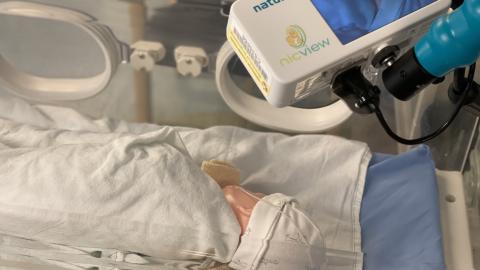Resource
Labour and birth process
What to expect during labour and the birthing process.
Practices that support labour
Nature has found a way to make human birth possible by minimizing our thoughts. Labour support can mean different things for different people, some may choose a small room, with dim lights, minimal conversation with one quiet, experienced, comforting person in the room, waiting patiently. Others may be surrounded by many friends &/or family. Either way, we need privacy and protection from having to pay attention.
Ways to support labour
- Support and counselling can help to relieve any misconceptions or fears.
- A doula or experienced support person can provide undivided attention throughout.
- Labour starts spontaneously.
- Comfort, distraction and privacy allow you to respond to the strength of labour uninhibited.
- Staying mobile; upright postures encourage the descent of your baby into the pelvis.
- Be oblivious to the passage of time, particularly when labour is slow.
Some other practical, helpful suggestions
Keeping your bladder empty.
Imaginary practice can be helpful: breathing through two consecutive 50-second long imaginary contractions with a minute in between; your uterus is strong. Imagine yourself relaxing after your uterus has relaxed.
Sleep in between contractions –there is often more ‘muscle relaxed’ time in the hour than there is ‘muscle tight’ time (contraction). In the early stages, it is possible to sleep through some contractions, stronger contractions wake you, and you get through it and then return to a drowsy state until the next contraction.
Drinking & eating small regular nourishing snacks during your labour.
Your baby’s heart is listened to throughout your labour with a doptone or continuous monitoring if required (cordless if available).
Talk to your nurse and primary care provider if you want an epidural.
Perhaps consider using non-pharmacological pain management options such as massage, meditation or acupressure.
Second stage: The birth of your baby
Once the baby’s head has passed through the cervix, the baby then moves down onto the perineum. This generally happens slowly as the uterus continues to become smaller with each contraction. It can even be a time for a nap. With a subsequent birth this part generally tends to move along faster. As baby moves down further onto the perineum, the pressure may feel as if you need to go to the bathroom. Try to soften and loosen to ease baby’s journey.
If coaching seems prudent, you may be encouraged to actively push. You may rotate through several different positions to maintain comfort and to encourage your baby’s descent.
Protecting your perineum
Once baby has moved down onto the perineum and under the pubic bone, baby’s head (or bottom if a breech) will be visible as baby descends with each contraction. Intuitive spontaneous urges to push may happen at this stage. You may feel a lot of rectal pressure.
Using one or all of our senses may help at this stage:
Hearing: listen to the voices of encouragement, support and coaching.
Seeing: viewing with a mirror to direct and encourage effort, especially helpful if an epidural has removed any sensation and intuitive pushing urges. (Fake those urges if you can!).
Touching: if able to reach with a hand to gently cup baby’s head, or perineum, a sense of touch can be comforting and reassuring. A birth attendant (or support person) can also gently hold with a warm or cool cloth if it feels helpful to you.
Third stage: The birth of the placenta
A warm, private feeling of safety as you hold your baby skin-to-skin after birth promotes the release of your hormones to help birth your placenta and encourage the uterus to contract—usually, the placenta births within five to ten minutes after the baby.
Baby's first moments after birth
You or your provider will lift baby to rest on your chest.
As your baby takes their first breath, your nurse/midwife/Dr will watch, dry and massage to ensure your baby is safe. Generally there is no hurry to clamp and cut the (umbilical) cord and baby stays with you.
If baby needs more stimulation, then the cord is clamped and cut and baby is assessed on an infant warmer in your room, which is designed with equipment to help support a baby. Occasionally a newborn may need help with breathing for a brief time and then is returned to you as soon as baby is stable.
If your baby needs longer, ongoing support, the pediatric team would be present and baby may be transported to the Special Care Nursery (SCN). Your support person can accompany baby so that you know where baby will be cared for. Baby may need time and support to adjust to life outside of you. The special care nursery nurse and pediatrician will be there for you and baby, and will explain what ongoing care baby may require.
It may be emotionally difficult for you and your partner to be separated from your baby. As soon your placenta is birthed, and you have had some time to recover, you would be taken to the nursery on your way to the post-partum unit. You will see and talk to your baby, hold hands, and meet the team caring for your child. It may or may not be possible to breastfeed at this time. Perhaps you have already hand-expressed some colostrum, which the baby will receive when ready to feed.
Epidural
Anaesthesiologists are available 24/7 if you request/need an epidural.
After the epidural has been placed, it takes about five to ten more contractions before the sensation has gone. When you can no longer feel the contraction, let your body relax and sink into your bed. Hopefully, you can now catch up on some sleep.
Blood must be taken, and an intravenous infusion of Normal Saline (IV) must be started before the epidural insertion. Your blood pressure and baby are monitored after the epidural insertion.
Rapidly processed emergency birth
An urgent situation involving either you or baby can suddenly occur. If this happens, the obstetric, anaesthetic and pediatric team are called immediately and in consultation with you, may necessitate assisting to birth your baby as quickly as possible either by encouraging your pushing effort with or without forceps or a vacuum or a swift move into the operating room for a caesarean birth.
Every one of your team of providers responds quickly and precisely, keeping you up-to-date and staying with you until the situation is resolved.
You may wish to review this unique situation a few days or weeks after the event with your providers so that you can recall what happened and why and how it may have impacted your expectations and recovery.
Frequently Asked Questions
-
What do you do when your membranes rupture?
Please call your provider or the labour and delivery unit if you notice any fluid leaking from your vagina. Generally, you will be asked to come in for an assessment to confirm that baby and you are both well. The nurse/midwife/doctor will ask about
- Colour of the fluid and how much
- What time your membranes ruptured
- If your labour contractions have started
- Your Group B Strep status
- Whether baby is moving normally
Please put a pad on so the fluid can be assessed upon arrival. If there is a need to induce your labour, this may be done either with misoprostol tablets (taken orally)) or with intravenous oxytocin.
-
What happens to your uterus and cervix during labour?
When the timing is right for your labour to start, your cervix has possibly softened and shortened, perhaps even started to open, and your uterus will begin contracting.
Initially, contractions may last 30-40 seconds and be five to fifteen minutes apart. They become closer together, one to five minutes apart and can last 50-60 seconds.
-
What should you eat and drink during labour?
During labour, eat light, small, frequent snacks and juices to maintain energy. Hospital food is provided for the pregnant person but not for the support person. As labour progresses, your uterus becomes the principal working muscle, and your stomach may not empty as efficiently. Some nausea or even vomiting after a large meal can occasionally happen. Usually, an emptier stomach feels more comfortable.
Rarely, some women can feel nauseous throughout labour – nausea may be relieved by pressing on the acupressure point on your wrist or taking anti-nausea medication. An antacid is also available to relieve heartburn.













